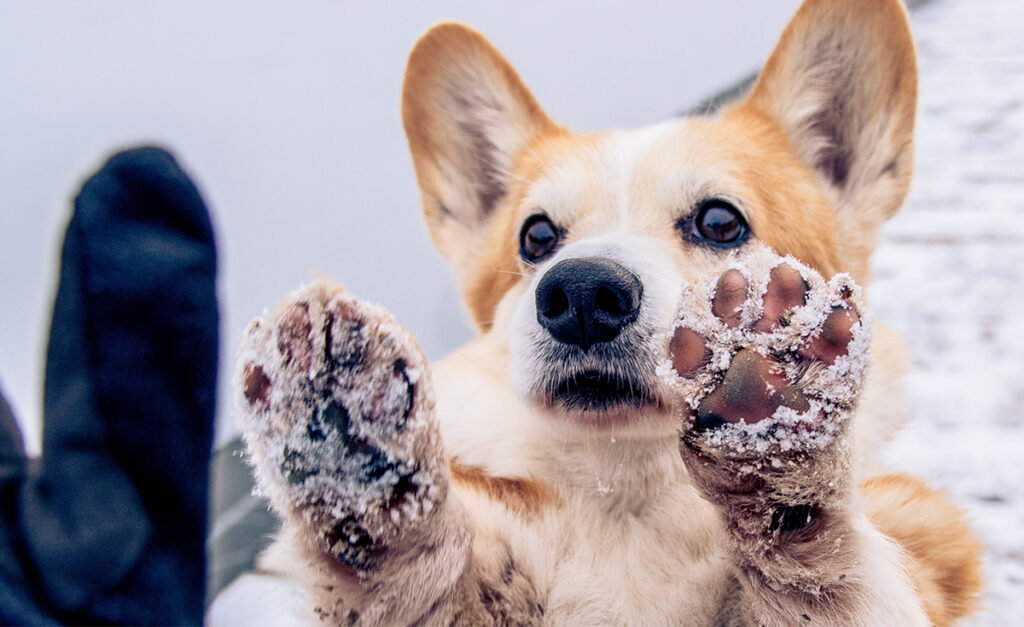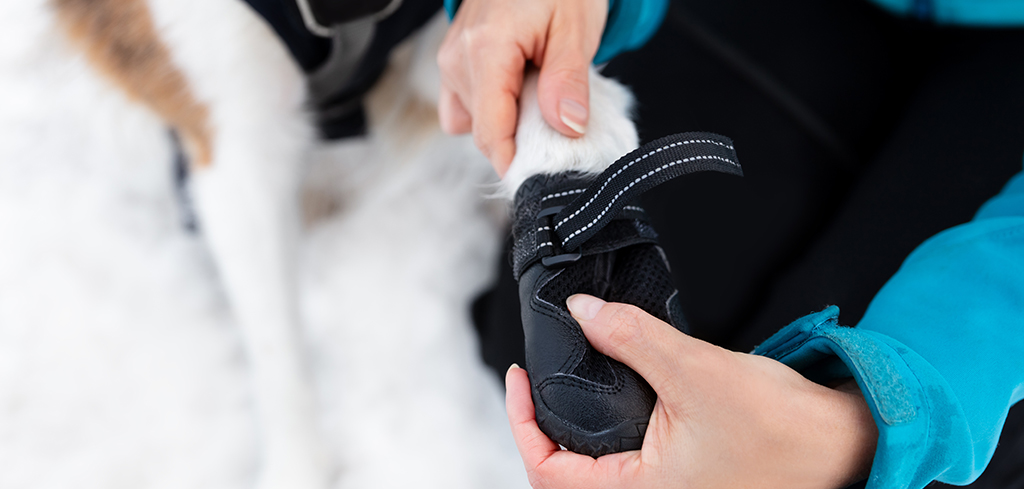How to Keep Your Dog’s Paws Clean and Healthy During Winter
Winter can be a magical time for both dogs and their owners. The joy of playing in the snow and going on winter adventures is unparalleled. However, the cold weather, snow, and salt on the ground can pose risks to your dog’s paw pads. It’s important to take extra care to protect and clean your dog’s paws during the winter months. In this comprehensive guide, we will explore various methods and products that can help you keep your dog’s paws clean and healthy in winter.

Understanding the Importance of Paw Care in Winter
When it comes to winter paw care, prevention is key. Dog paws are vulnerable to the dangers associated with cold weather, including sharp ice, snow clumps, dampness, lack of traction, and exposure to ice-melting chemicals. Taking proactive measures to protect your dog’s paws can prevent injuries, discomfort, and potential health issues.
The Anatomy of a Dog’s Paw
To understand how to care for your dog’s paws, it’s important to familiarize yourself with the different parts of a dog’s paw. A dog’s paw consists of several key components:
- Paw Pads: The thick, cushion-like pads on the bottom of a dog’s paw that act as shock absorbers and protect the underlying structures.
- Digital Pads: The smaller pads located on the toes of a dog’s paw that provide additional support and traction.
- Carpal Pad: The small pad located higher up on a dog’s front leg, providing extra support when the dog is standing or walking on rough surfaces.
- Dewclaws: The small, non-weight-bearing claws located higher up on a dog’s leg, often removed in certain breeds.
- Nails: The keratinous coverings at the tips of a dog’s toes that require regular trimming to prevent overgrowth and potential injuries.
Tips for Cleaning Your Dog’s Paws
Keeping your dog’s paws clean is essential for their overall health and well-being. Here are some tips to help you effectively clean your dog’s paws during the winter months:
1. Regular Paw Inspections
Take the time to inspect your dog’s paw pads regularly. Look for any signs of injury, irritation, or foreign objects stuck between the paw pads. Gently spread the toes apart to ensure there are no hidden clumps of snow or ice. If you notice any issues, consult with your veterinarian for proper treatment.
2. Wipe Down After Walks
After every walk, wipe your dog’s paws with a clean, damp cloth or pet-safe wipes. This will remove any dirt, salt, or ice melt chemicals that may be clinging to their paws. Pay special attention to the areas between the toes and the paw pads.
3. Paw Soaks
If your dog’s paws are particularly dirty or irritated, consider giving them a soothing paw soak. Fill a shallow basin or sink with warm water and add a pet-friendly paw soak solution. Gently place your dog’s paws in the water and let them soak for a few minutes. This can help remove dirt, alleviate discomfort, and promote healing.
4. Use a Paw Plunger or Dexas MudBuster
Invest in a paw plunger or Dexas MudBuster, which are specially designed tools for cleaning your dog’s muddy paws. These devices have soft bristles or silicone brushes that effectively remove dirt and debris from the paws. Simply fill the plunger or MudBuster with warm water, insert your dog’s paw, and gently rotate to clean. This method is particularly useful for dogs who dislike having their paws touched.

5. Dry Thoroughly
After cleaning your dog’s paws, make sure to dry them thoroughly to prevent moisture-related issues. Use a clean towel or a pet-safe blow dryer on a low heat setting. Pay close attention to the areas between the toes and the paw pads.
Protecting Your Dog’s Paws in Winter
In addition to cleaning, it’s crucial to protect your dog’s paws from the harsh winter conditions. Here are some tips and products that can help you safeguard your dog’s paws:
1. Dog Booties
One of the most effective ways to protect your dog’s paws in winter is by using dog booties. Booties provide a barrier between your dog’s paws and the cold, wet ground, preventing injuries and reducing exposure to harmful substances. Look for booties that are lightweight, adjustable, and made from durable, waterproof materials. It’s important to choose the right size booties for your dog and gradually introduce them to wearing them.

2. Paw Balms and Waxes
Paw balms and waxes are another great option for protecting your dog’s paws. These products create a protective barrier on the paw pads, preventing ice and snow from sticking and reducing the risk of cracking or drying out. Apply a thin layer of paw balm or wax before each walk to keep your dog’s paws moisturized and shielded from the elements.
3. Pet-Safe Ice Melters
If you use ice melters on your property, make sure to choose pet-safe options. Many traditional ice melters contain chemicals that can be harmful to dogs if ingested or if they come into contact with their paws. Look for ice melters that are labeled as safe for pets and follow the instructions carefully. Additionally, consider providing a designated potty area where you use pet-friendly alternatives like sand or straw instead of ice melters.
4. Limit Exposure to Cold Surfaces
During extremely cold weather, try to limit your dog’s exposure to icy or rough surfaces. Opt for walks on cleared paths or use dog-friendly boots to provide extra insulation and traction. If your dog starts lifting their paws or seems uncomfortable, it may be a sign that the ground is too cold for them.
5. Keep Nails Trimmed
Regular nail trims are essential for your dog’s paw health, regardless of the season. Long nails can affect a dog’s gait and increase the risk of slips and falls. Keep your dog’s nails well-trimmed to prevent them from splaying and reduce the accumulation of snow, ice, and debris between the toes.
6. Moisturize Paw Pads
Cold weather can cause dryness and cracking of the paw pads. To keep your dog’s paw pads moisturized, consider using a pet-safe paw pad moisturizer or coconut oil. Apply a small amount to the paw pads and massage it in gently. This will help prevent dryness and promote healthy, supple paw pads.
7. Clean Off Salt and Chemicals
Salt and de-icing chemicals used on sidewalks and roads can be harsh on your dog’s paws. After each walk, make sure to thoroughly clean off any salt or chemicals that may be clinging to your dog’s paws. Use a pet-safe paw wipe or damp cloth to wipe away any residue.
8. Provide Warm and Dry Rest Areas
When you and your dog return home from outdoor activities, make sure to provide them with a warm and dry resting area. Place a comfortable bed or blanket in a cozy spot away from drafts. This will help your dog warm up and allow their paws to dry completely.
Conclusion
Taking care of your dog’s paws during the winter months is crucial for their overall well-being. By regularly cleaning their paws, using protective measures like booties and paw balms, and being mindful of the surfaces they walk on, you can ensure that your furry friend’s paws remain clean, healthy, and comfortable throughout the winter season. Remember to consult with your veterinarian for specific recommendations and products that are best suited for your dog’s individual needs. With proper care and attention, you and your dog can enjoy the wonders of winter without worrying about their precious paws.

